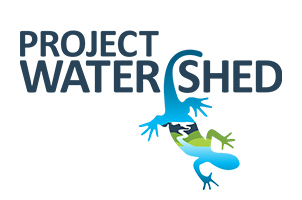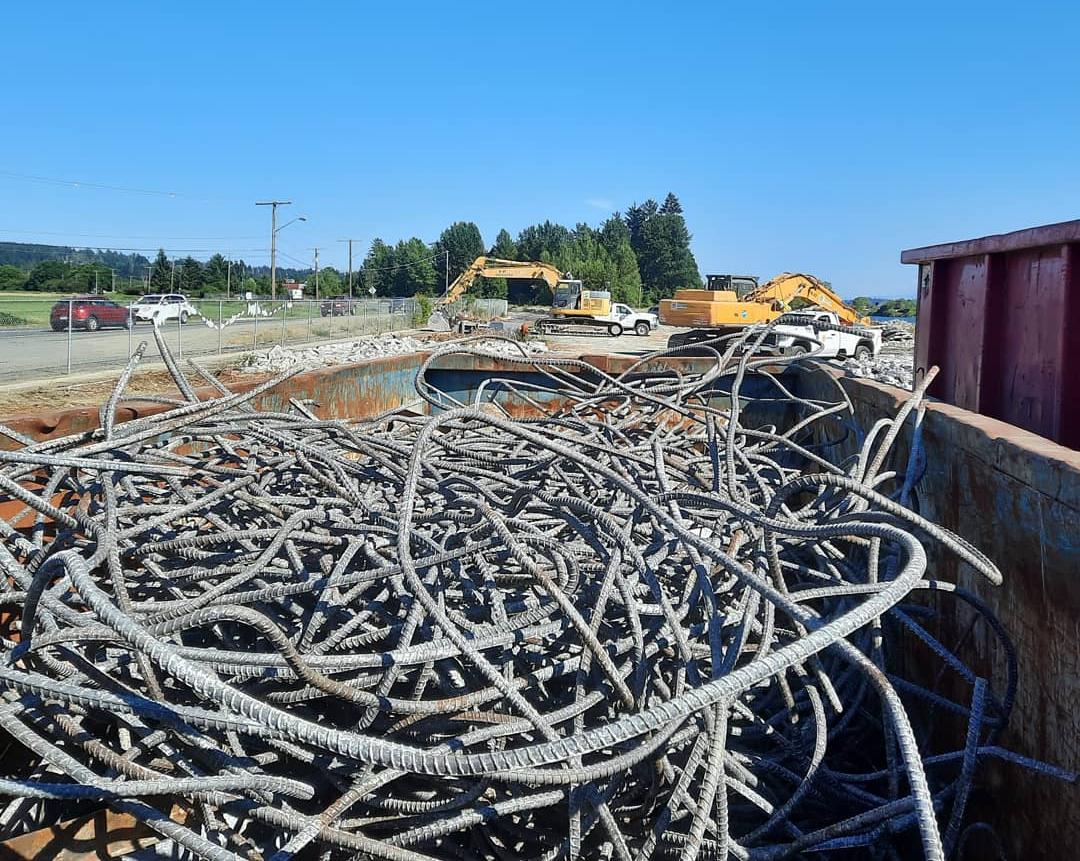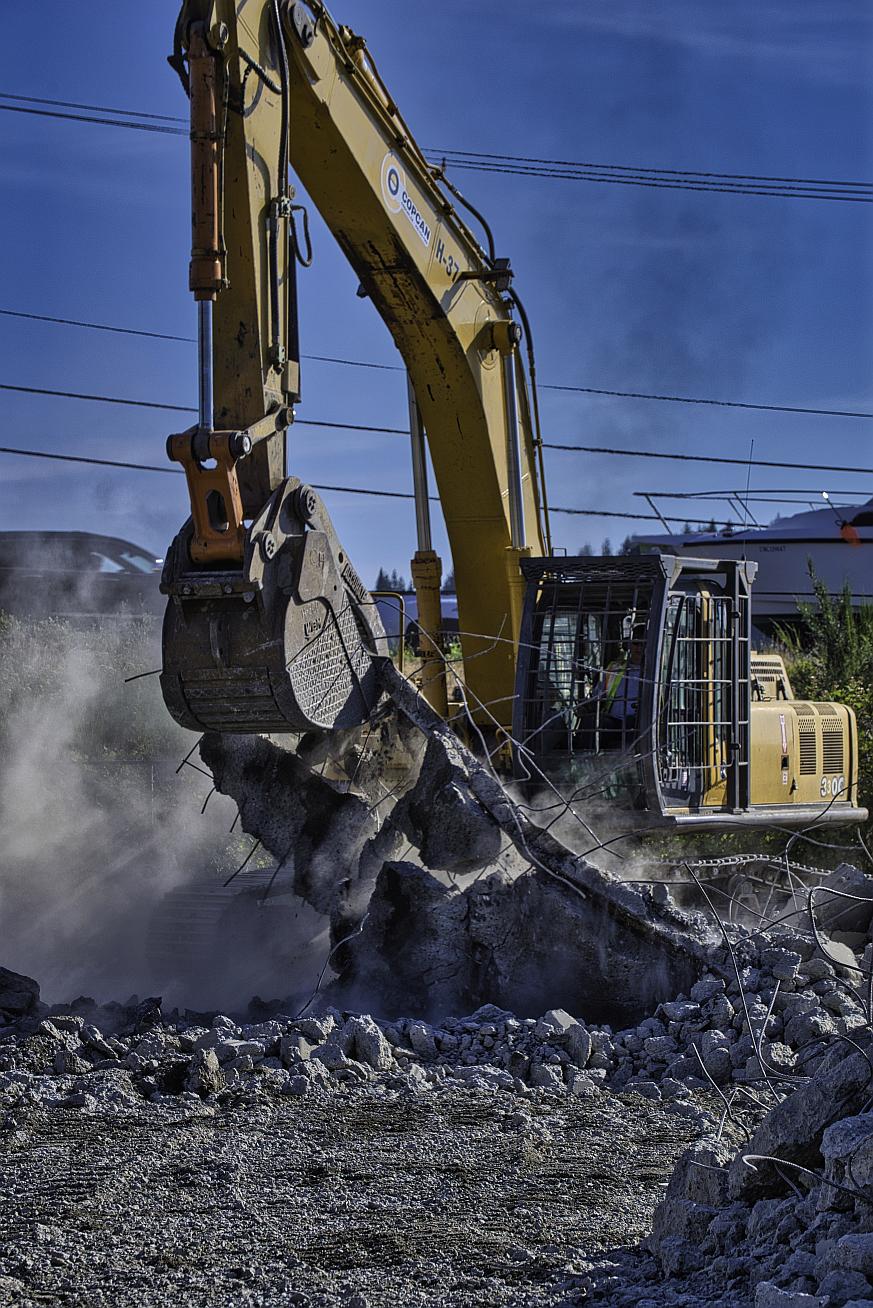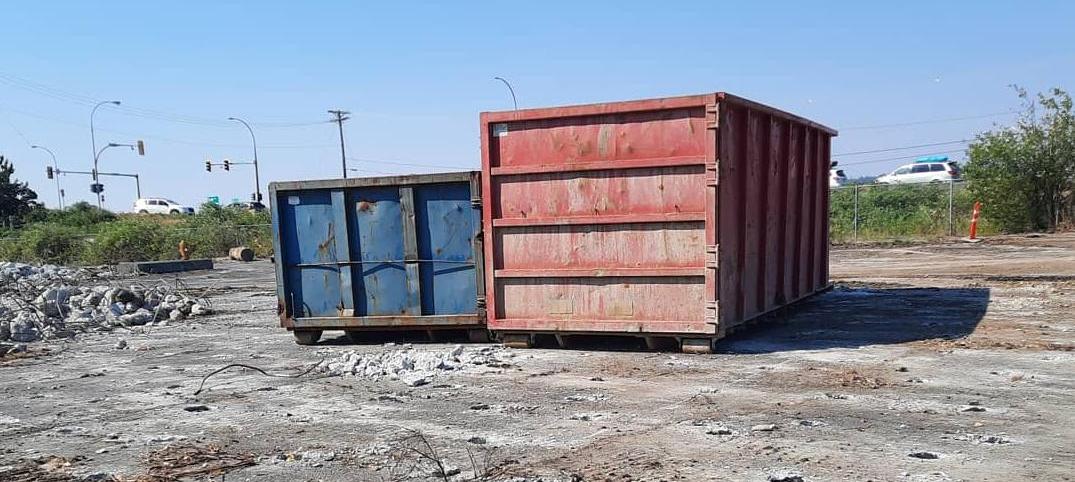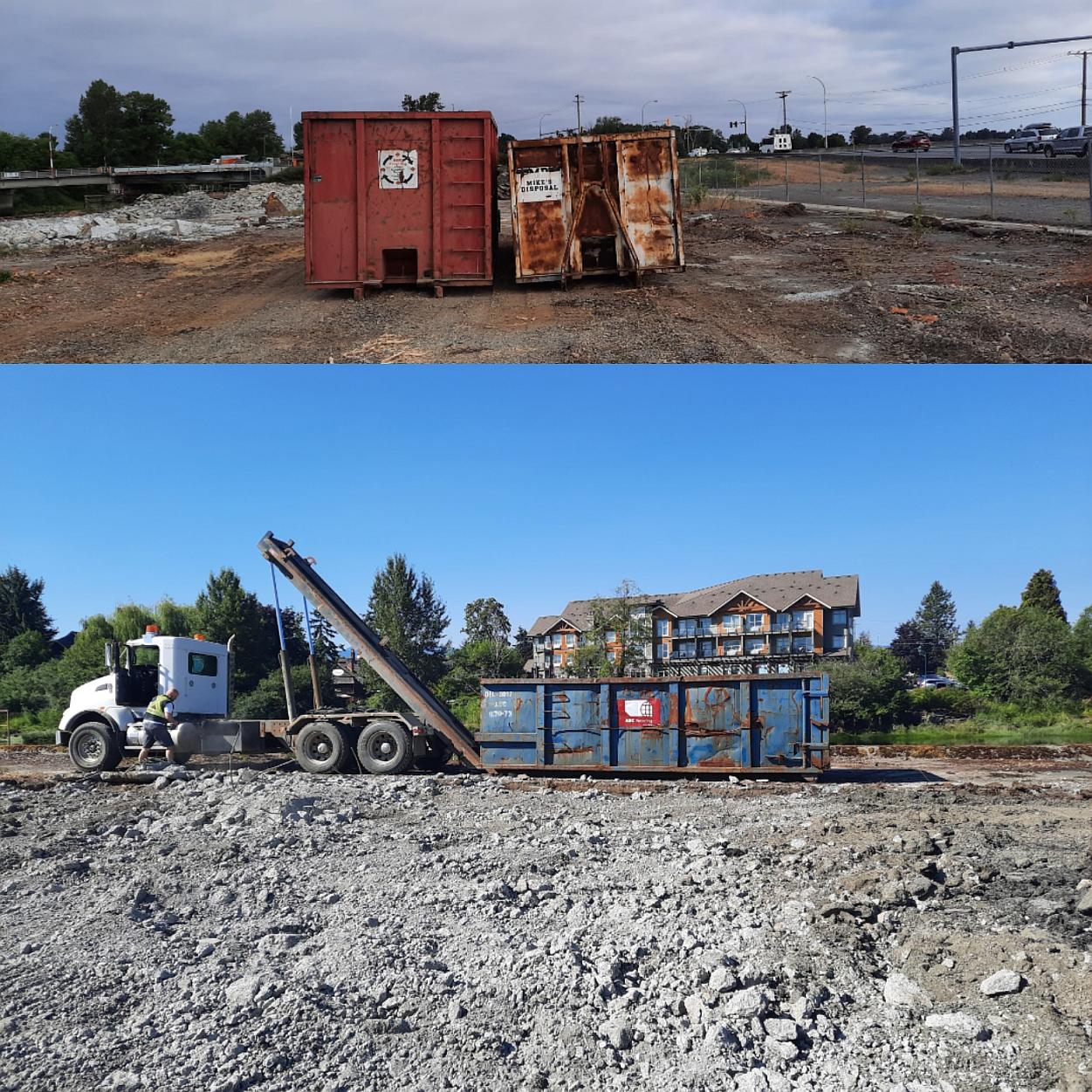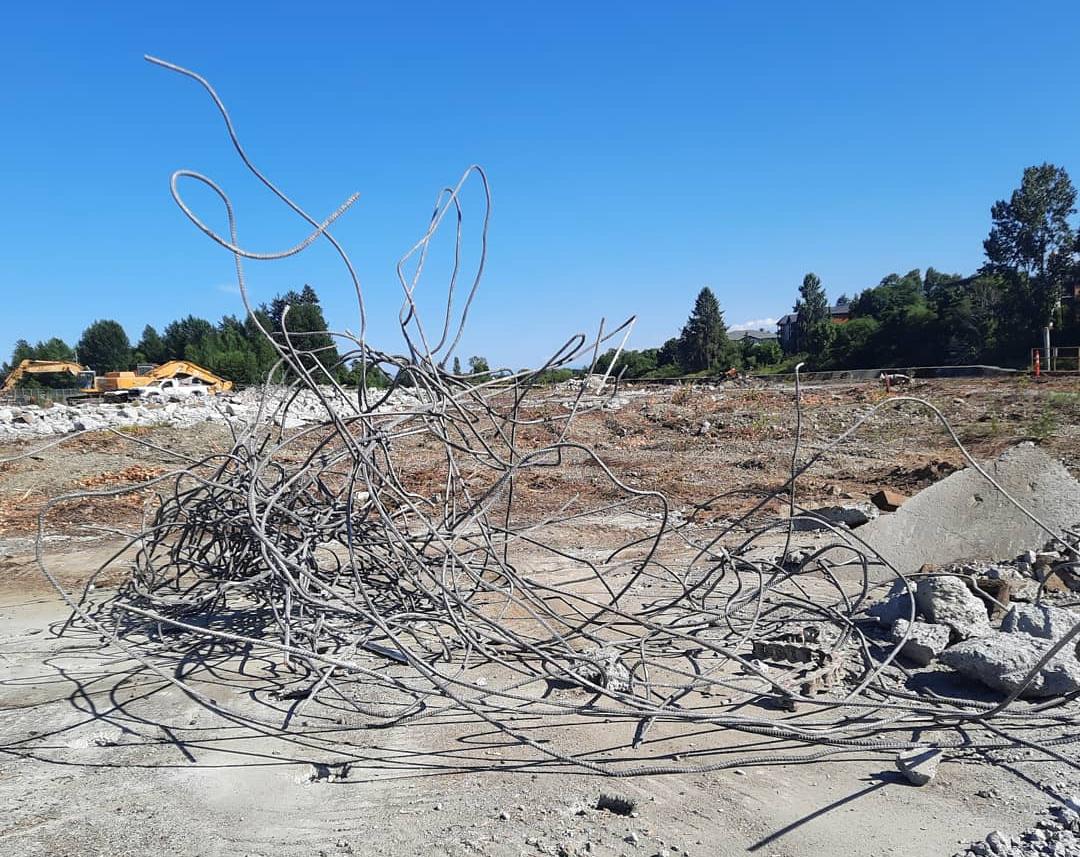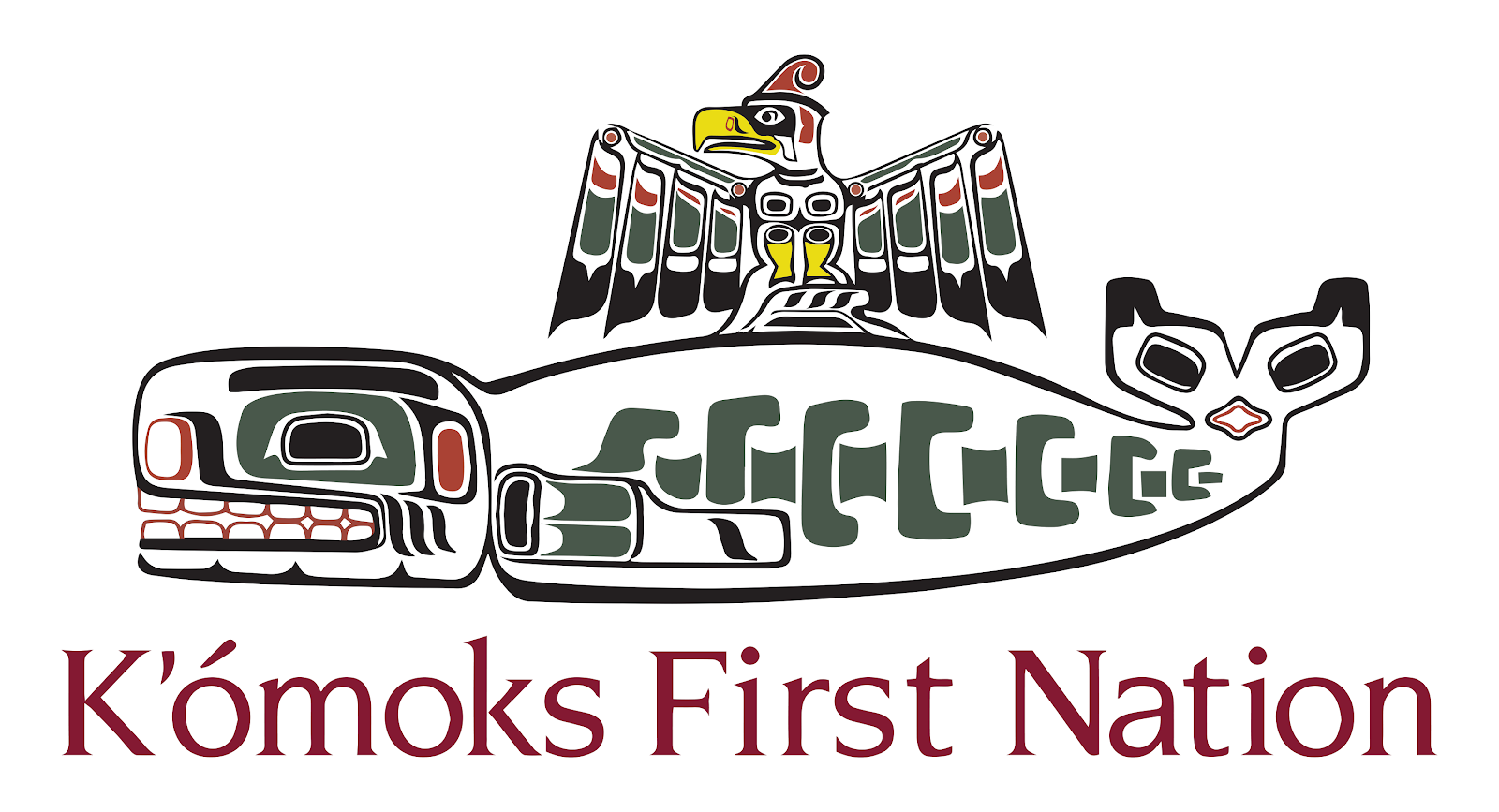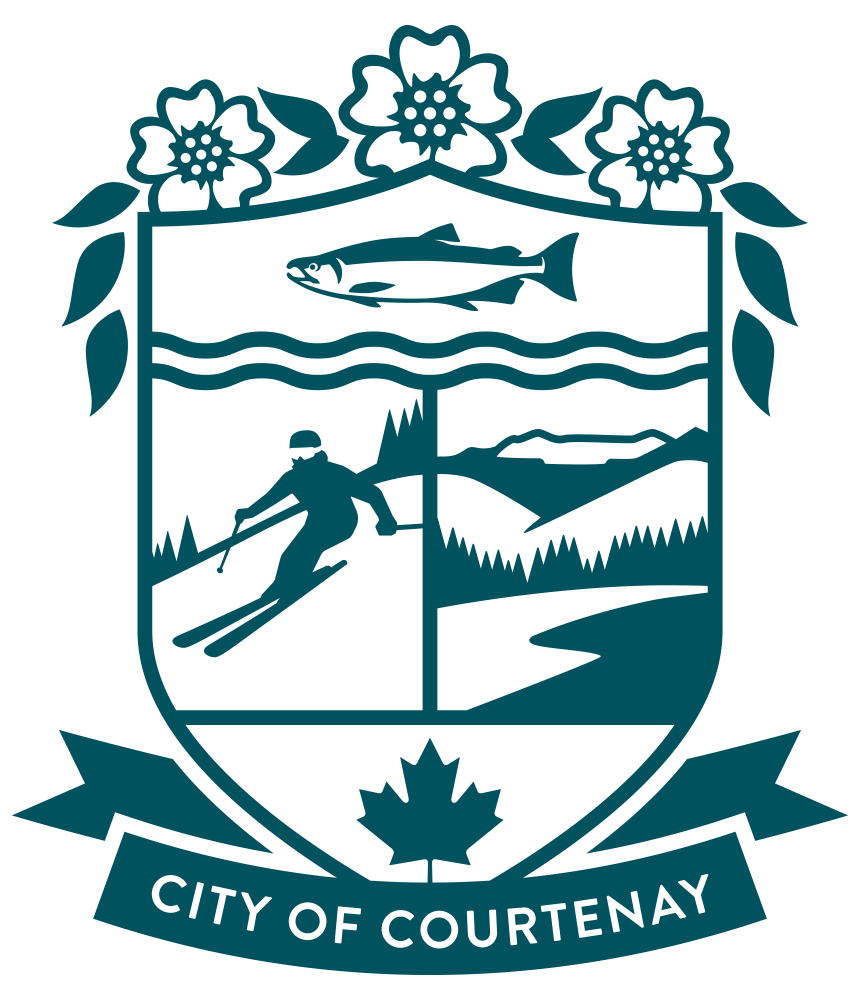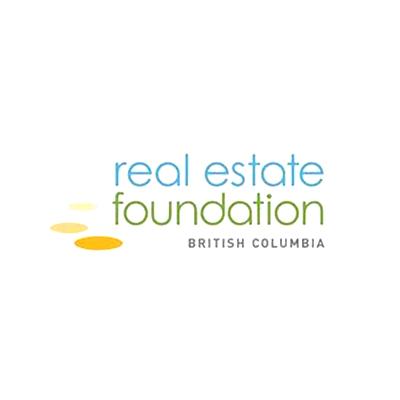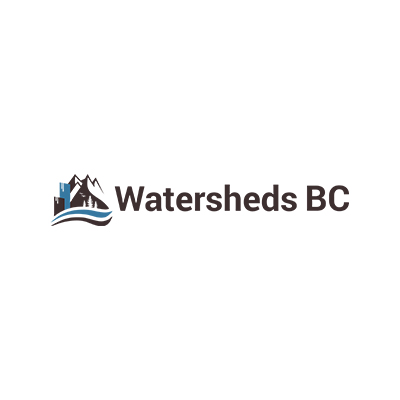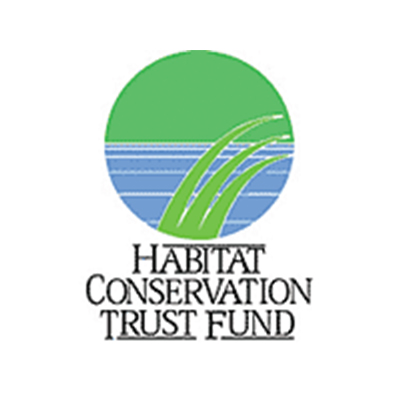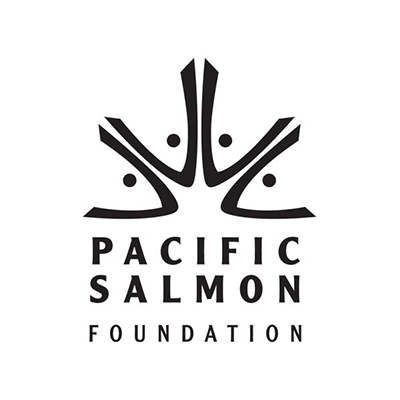Metal Recycling at Kus-kus-sum
Rebar in recycling bins at Kus-kus-sum ~ C Holbrook
Ripping up concrete with rebar ~ N Prince
1st, 2nd and 3rd set of bins dropped off at Kus-kus-sum ~ C Holbrook
Rebar is used to reinforce concrete and in the areas where heavy sawmill machinery was placed, the rebar strips are denser and sometimes thicker. In some places, metal beams were used for extra support. Copcan Civil Ltd., the contractors removing the concrete, must separate the metal from the concrete so that it, and the concrete, can both be recycled.
Once the metal is separated it gets put into bins that are placed on the site by ABC recycling. Once the bins are full, ABC comes with new, empty bins and hauls the full bins away. This process will be repeated throughout the summer until all the metal is removed from the site and trucked away for recycling. Funds from recycling the metal will help offset the costs of the restoration.
Occasionally, before the rebar goes into a bin, it is pulled out and left on the concrete in intriguing shapes and configurations. More than one person has remarked on the aesthetics of these ephemeral rebar sculptures, one of which is pictured on this page.
In the spirit of summer fun, Project Watershed is held a contest to see who can guess the number of full bins of metal that will come of the site. It turns out there were 31 bins. We had two people come very close to that number with Sonya Jenssen guessing 30 and Dianna Robinson guessing 32. They both won a $25 gift certificate from the Peninsula Co-op.
In addition to the 31 bins of metal, 99 loads of asphalt and 750 loads of crush were trucked off the site to be repurposed! Please note this is only the material from the surface of the site. Copcan will be digging up the subsurface concrete footings, slabs and walls this fall, producing more crush and metal to be recycled in the near future.
Thank you so much for your support and interest in Kus-kus-sum, if you have any questions feel free to contact us at projectwatershed@gmail.com.
Ephemeral rebar sculpture ~ C Holbrook
Disappearing rebar sculpture ~ C Holbrook
Restoration Partners & Sponsors
Related Posts
Mallard Creek Restoration Update for 2024
Restoration work in Mallard Creek will continue this year, including invasive removal, restoring connectivity, and trial planting of a new riparian species. Volunteer events starting in September 2024.
Volunteer at Kus-kus-sum Chamber of Commerce Event
We are showing Kus-kus-sum off to businesses in the Valley through a Chamber Business to Business event. We are looking for a few volunteers to assist with this event.
Coastal Plant Monitoring
Get involved with our new vegetation community science monitoring program!
Spring Field Trips
Throughout May and June Project Watershed will be taking elementary school classes out on field trips to learn about estuary and coastal ecology and to assist with planting and plant maintenance.
Working Together to Identify Forage Fish Spawning Beaches
This year marks the 5th year of a partnership between Comox Valley Project Watershed Society and North Island College on a long-term study to examine intertidal spawning habitats of forage fish in the northern Salish Sea.
Glen Urquhart Update – Spring 2024
Latest news from Glen Urquhart restoration progress for spring 2024.

